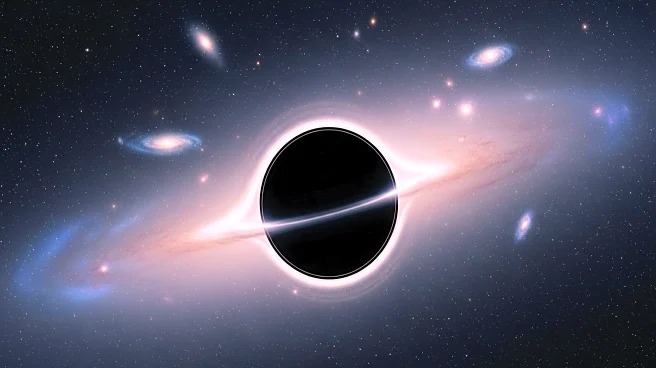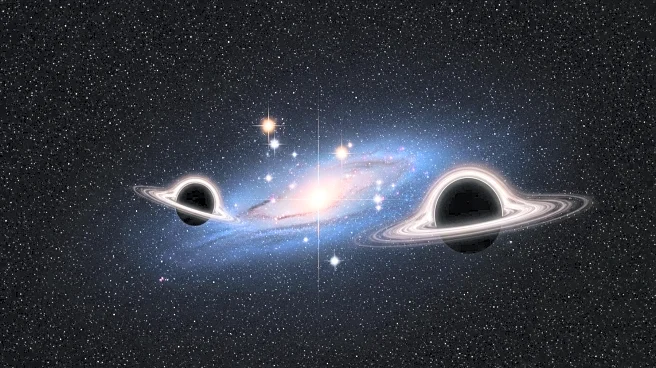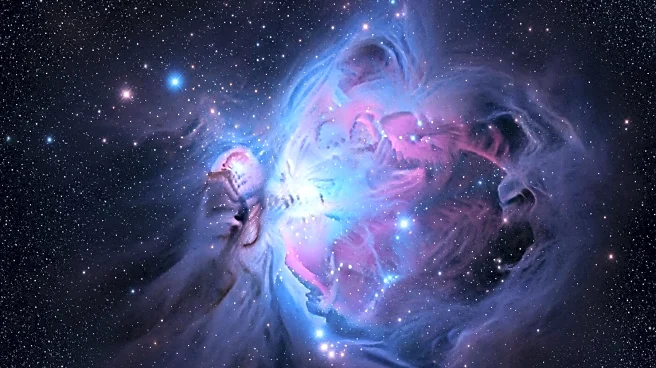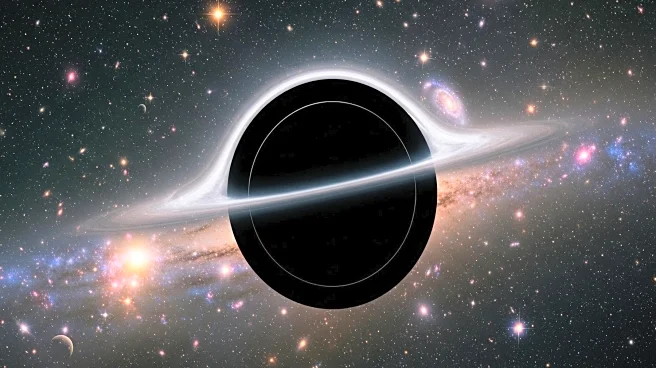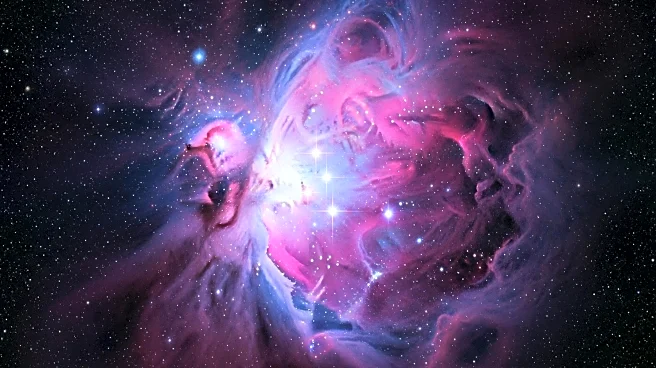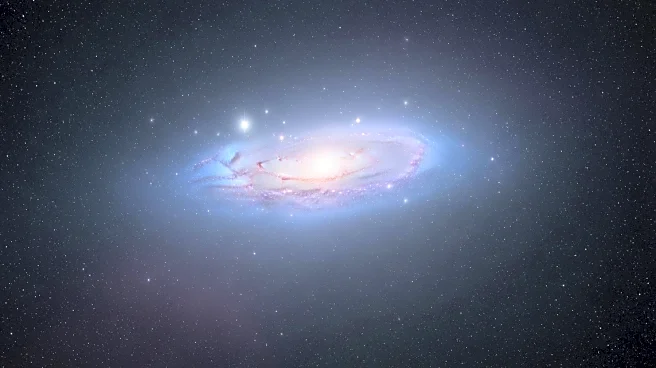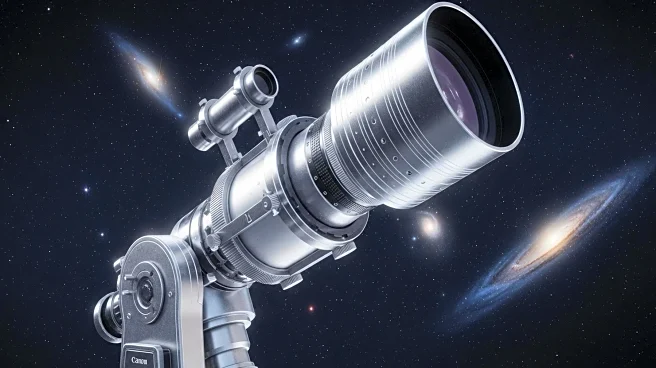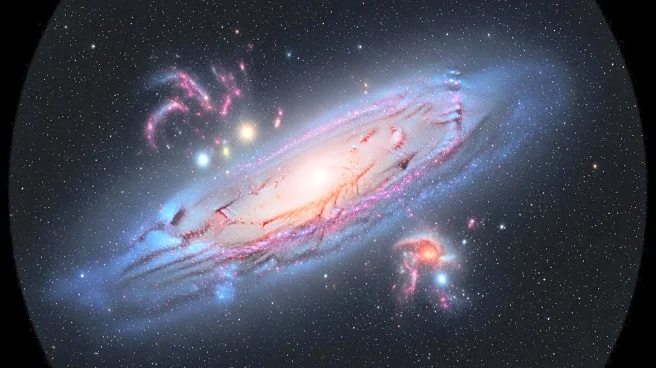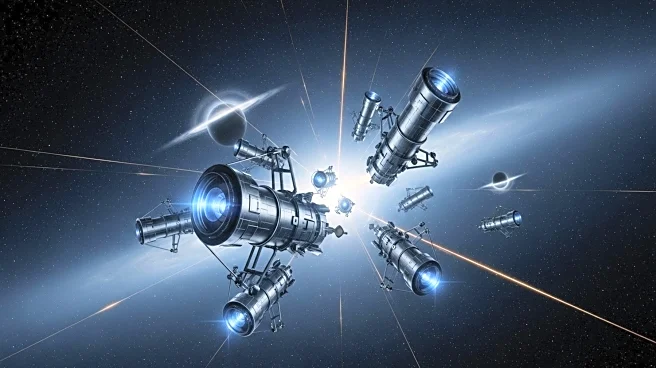What's Happening?
Recent studies have revealed the presence of intermediate-mass black holes (IMBHs) in dwarf galaxies, bridging the gap between stellar-mass and supermassive black holes. These findings are facilitated by improved observational techniques, including the use of the James Webb Space Telescope. Previously, active central black holes were identified in only 0.5% of dwarf galaxies. However, a new study has increased this detection rate to nearly 2% among 115,000 observed dwarf galaxies. This suggests a larger, undetected population of black holes within these low-mass galaxies. The discovery of IMBHs in both nearby and distant dwarf galaxies enhances our understanding of their prevalence and role in galactic evolution.
Why It's Important?
The detection of intermediate-mass black holes in dwarf galaxies is significant for astrophysics as it provides insights into the formation and evolution of supermassive black holes. These IMBHs serve as a missing link between smaller stellar-mass black holes and larger supermassive black holes, potentially offering clues to how the latter came to exist. Understanding the interaction between these black holes and their host galaxies can reveal how they influence galactic growth and evolution over cosmic time. The findings suggest that a substantial number of black holes remain undetected, highlighting the need for continued advancements in observational technology.
What's Next?
With improved technology, astronomers are expected to continue uncovering more intermediate-mass black holes in dwarf galaxies. The ongoing use of advanced telescopes like the James Webb Space Telescope will likely lead to further discoveries, helping to map the masses of these elusive black holes. This research could eventually answer key questions about the origins of the first black holes formed in the universe and their impact on galaxy formation and evolution. Continued studies may also explore the potential influence of these black holes on star formation within their host galaxies.
Beyond the Headlines
The discovery of intermediate-mass black holes in dwarf galaxies raises important questions about the nature of these galaxies and their role in the universe. It challenges previous assumptions about the prevalence of black holes in low-mass galaxies and suggests that many may remain hidden. This has implications for our understanding of galaxy formation and the distribution of black holes across different types of galaxies. The findings also underscore the importance of technological advancements in astronomy, which are crucial for uncovering hidden aspects of the universe.
